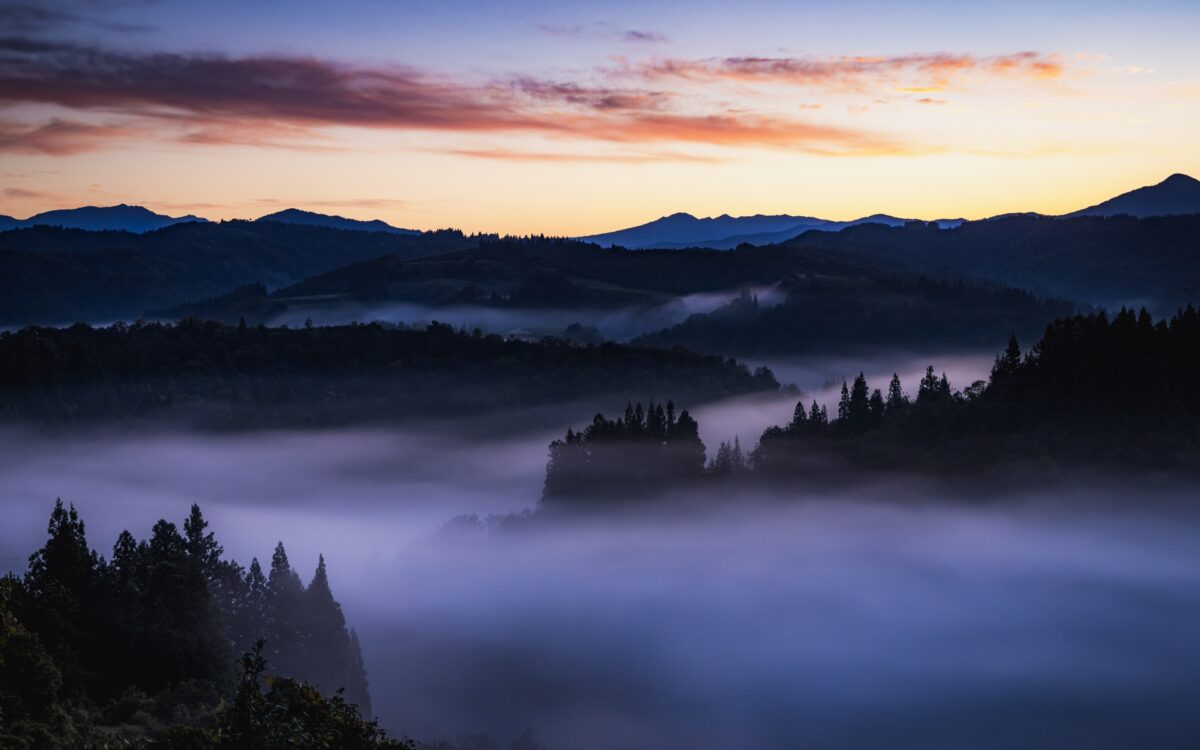The Charm of Hakuro: A Journey through Japan’s Forty Seasonal Divisions

『 This article is… 』
Introducing the charm of Hakuro (white dew) from across Japan. Explore the harvest scenery in Hokkaido, traditional events in Iwate, the natural beauty of Nagano, the onset of autumn in Kyoto’s Arashiyama, and the extended summer in Okinawa. Aimed at season enthusiasts and travel lovers, experience the unique landscapes and cultures of white dew in different regions. Discover the diverse beauty of Japan through the changing seasons and gain inspiration for your travels.
Japan’s four seasons each possess their own unique colors and cultures, bringing us many emotions. I am Kasumi, a travel web writer. Having traveled through all 47 prefectures of Japan, I will introduce to you “Hakuro” – one of the forty seasonal divisions representing the four seasons. In this article, I will delve into the customs, history, origins, meanings, and characteristics of Hakuro, region by region, and explain how they are being passed down to the present. Through the white dew that heralds the arrival of autumn, I hope you will feel the depth of Japan’s rich nature and culture.
- Hakuro (White Dew) – One of the Forty Seasonal Divisions that Color the Four Seasons
- Traditions and History of White Dew – Unraveling Japan’s Traditions
- White Dew and Nature – The Beginning of Autumn in Japan
- White Dew and Modern Life – The Change of Seasons and Everyday Life
- The Contemporary Significance of White Dew – Learning Japanese Culture through the Seasonal Divisions
- Summary and Reflections
- Kasumi Points
Hakuro (White Dew) – One of the Forty Seasonal Divisions that Color the Four Seasons
The Basics of White Dew: Origin and Meaning
White Dew refers to the period from around September 7th to 22nd in the solar calendar, marking the end of summer and the beginning of autumn. The name of this seasonal phase comes from the phenomenon of “white dew forming on grass and trees in the mornings and evenings,” symbolizing the transition of the four seasons crafted by Japan’s nature. Traditionally, this period has been one of the busiest for agricultural work, marking the start of harvest preparations.
Scenes of White Dew Across Japan
With the arrival of White Dew, the landscape throughout Japan begins to take on a more autumnal feel. For example, in the vast fields of Hokkaido, the harvest of potatoes and corn begins, while in Kyoto’s Arashiyama, the still-lush trees start to show hints of changing color. These scenes symbolize the natural transitions brought about by White Dew, demonstrating the rich diversity of nature and culture across Japan.
My Experience: A Small Journey in White Dew
My particularly memorable experience was in Hakuba Village, Nagano Prefecture, a few years ago. During White Dew, the contrast between the cold mornings and evenings and the warmth of the daytime created a mystical landscape shrouded in fog over the mountains. Conversations with locals taught me how this period’s weather changes significantly affect farming practices, and in turn, are reflected in the region’s food culture.
Thus, White Dew is not just a mere seasonal phase but a significant time that lets us feel Japan’s four seasons and is deeply rooted in the culture and life of each region. In the next section, we will delve deeper into the customs and history associated with White Dew.
Traditions and History of White Dew – Unraveling Japan’s Traditions
Traditional Japanese Customs Related to White Dew
The period of White Dew is marked by various traditional events throughout Japan, especially those related to agriculture, embodying prayers for a bountiful harvest. For example, in some areas of Iwate Prefecture, a festival known as “Hakuro Festival” is held, celebrating the new harvest. In these festivals, local shrines receive offerings of new crops and vegetables, expressing gratitude to the deities and praying for future abundance.
White Dew and Japanese History
White Dew has held significant meaning throughout Japanese history. For example, during the Heian period, celebrations of the new harvest were held in the imperial court around the time of White Dew. Additionally, during the Edo period, special ceremonies praying for the abundance of the five grains were conducted in various locations in line with White Dew. These ceremonies have been inherited in some regions to this day, treasured as traditional culture.
My Experience: Feeling History in the Customs of White Dew
I once experienced a traditional event held during White Dew in a small village in Miyagi Prefecture. The sight of villagers pulling hand-decorated floats, singing songs, and dancing in celebration of the harvest made me feel the essence of Japan’s age-old culture. Thus, White Dew has been deeply rooted in the lives of the Japanese people since ancient times, treasured as a part of annual events.
This chapter introduced the customs and history related to White Dew, but the natural changes brought about by White Dew also significantly impact the lives and culture of Japanese people. In the next section, we will look more closely at the relationship between White Dew and nature in Japan.
White Dew and Nature – The Beginning of Autumn in Japan
Natural Changes Brought by White Dew
During the period of White Dew, nature in Japan begins to undergo significant changes. The heat of the daytime subsides, and the coolness of mornings and evenings increases. In the mountains, leaves start to change color, heralding the arrival of autumn. Particularly in Japan’s high mountainous areas, the beginning of the autumn foliage is often seen around this time, creating an attractive season for tourists.
Differences in Nature by Region
The impact of White Dew varies across Japan. In Hokkaido and the Tohoku region, autumn leaves begin to appear around White Dew, while in regions south of the Kanto area, lush greenery continues. For example, in Okinawa, even during White Dew, the climate remains relatively warm, and sea bathing is still enjoyable. Thus, White Dew can be said to symbolize the diversity of nature across Japan.
My Experience: Facing Nature during White Dew
My particularly memorable experience was at the base of Mount Fuji during White Dew. The mountain, accompanied by the cool air of early autumn, enhanced its majestic natural beauty. An early morning hike revealed a sunrise from the fog-enshrouded summit, allowing me to appreciate the grandeur of nature and the wonderful transition of seasons.
White Dew is a particularly striking time in the seasonal transitions shown by nature in Japan. In the following section, we will explore how White Dew affects the lives of modern Japanese people.
White Dew and Modern Life – The Change of Seasons and Everyday Life
Changes in Lifestyle during the White Dew Period
With the arrival of White Dew, changes can also be seen in the lifestyle of many Japanese people. As the summer heat subsides and the climate becomes more comfortable, the enjoyment of outdoor activities and sports shifts. For example, hiking and cycling become popular, taking advantage of the cool autumn climate. In terms of food culture, dishes using seasonal ingredients are enjoyed, and foods such as saury, chestnuts, and new rice appear on the dining table.
Modern Events Related to White Dew
Various events are held in different areas during the White Dew period. In particular, festivals celebrating the autumn harvest and food festivals stand out. For example, the “Kyoto Autumn Taste Festival” in Kyoto attracts many people with dishes made from fresh local ingredients. Such events play an important role in modern life as opportunities to enjoy seasonal changes.
My Experience: Modern Enjoyment of White Dew
One of the ways I have recently enjoyed the White Dew period is through gourmet tours that savor autumn flavors. Last year, I visited the Furumachi market in Niigata Prefecture and enjoyed new rice and seasonal seafood. The sweetness of the new rice and the rich flavor of the seafood, unique to the White Dew season, allowed me to feel the transition of seasons.
It is clear that the White Dew period influences not only the natural environment in Japan but also the lives of people, offering various ways to enjoy it. Next, we will explore specific examples and analyses related to White Dew, delving into its contemporary significance.
The Contemporary Significance of White Dew – Learning Japanese Culture through the Seasonal Divisions
White Dew and Japan’s Environmental Awareness
The period of White Dew is also a season when environmental awareness increases. During this time, events focusing on environmental conservation and coexistence with nature are held throughout Japan. For example, the “Mount Fuji Clean Campaign” is conducted in Yamanashi Prefecture around White Dew, with many volunteers participating in activities to preserve the natural environment. This serves as a great opportunity to re-acknowledge the importance of nature and heighten environmental protection awareness through White Dew.
White Dew and Healthy Living
White Dew is also a time to renew health consciousness. Being a transitional period between seasons, managing health becomes important. Special wellness programs and fitness events are offered at health facilities and sports clubs in various areas. For example, a fitness club in Tokyo hosts an event called the “White Dew Health Challenge,” offering programs aimed at maintaining health in autumn.
My Analysis: The Cultural and Social Impact of White Dew
From my travels, I have realized that White Dew has a wide-ranging impact on the lives of Japanese people. Not only does it allow us to feel the changes in nature, but it also influences cultural events, environmental awareness, and health management. White Dew plays an important role in contemporary Japanese society. This seasonal division not only allows us to experience the transition of seasons but also offers opportunities to engage with Japan’s traditions and modern culture.
Summary and Reflections
Through this blog, we have explored how Hakuro, one of the forty seasonal divisions, influences Japan’s nature, culture, and modern life. Hakuro is not just a time signaling the arrival of autumn; it significantly affects traditional customs throughout Japan and modern lifestyles.
Through this seasonal division, one can experience the transformation of Japan’s nature and enjoy various aspects such as cultural events, environmental awareness, and health considerations. My travels across Japan have allowed me to personally experience the beauty that the period of Hakuro brings and its enriching impact on the lives of the Japanese people.
Finally, Japan’s four seasons are a cultural heritage that the world should be proud of. Through seasonal divisions like Hakuro, rediscovering their beauty and significance, and enjoying the seasonal changes in our daily lives enrich our experiences. I hope the readers will enjoy the upcoming season of Hakuro, feeling the nature and culture of Japan.
Kasumi Points
Hakuro creates diverse and beautiful landscapes and cultures across Japan. Here are the characteristics of Hakuro in different prefectures, summarized as “Kasumi Points.”
Hokkaido (Around Sapporo)
Kasumi Point: In Hokkaido, the arrival of Hakuro brings a strong sense of cool autumn. In and around Sapporo, the harvest of agricultural products, such as potatoes and corn, begins, closely linked to the local food culture.
Iwate Prefecture
Kasumi Point: In parts of Iwate, traditional events called “Hakuro Festival” are held, celebrating the new harvest. Local shrines receive offerings of new grains and vegetables, expressing gratitude for the harvest and praying for future abundance. Hakuro is a crucial time for strengthening community bonds and maintaining long-standing traditions.
Nagano Prefecture (Hakuba Village)
Kasumi Point: In Hakuba Village, Nagano, during Hakuro, intense cold mornings and evenings create a mystical landscape as fog envelops the mountains. This natural phenomenon, unique to Hakuro, attracts tourists for hiking and mountaineering. The climate change during this period also affects local agriculture and reflects in the food culture.
Kyoto Prefecture (Arashiyama Area)
Kasumi Point: In Kyoto’s Arashiyama area, Hakuro brings a gradual coloring of the lush green trees, melding with the traditional atmosphere of Kyoto to signal the arrival of autumn. This period in Arashiyama, with the impending beauty of autumn leaves, has a special ambiance.
Okinawa Prefecture
Kasumi Point: In Okinawa, even during Hakuro, the climate remains relatively warm, extending the summer-like atmosphere. The sea maintains its calm and gentle beauty, allowing continued enjoyment of marine activities like swimming and diving. Hakuro symbolizes Okinawa’s perpetual summer, offering a unique charm different from other regions of Japan.
These “Kasumi Points” highlight how Hakuro produces varying landscapes and cultures across Japan. The period of Hakuro allows us to appreciate the unique beauty of each region.







